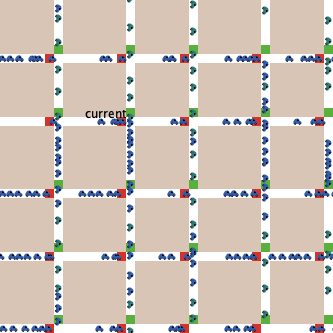ifelse
ifelse is used to define two sets of rules to be followed by turtles conditionally: one set if a provided condition is true and another set if the condition is false. To do so, we use the following format: ifelse condition(s)[...][...].
ask cows [
ifelse thirst > 10 [
drink-water
][
eat-grass
]
]
Things to keep in mind when using if-else:
- You can combine two or more conditional statements using
andandorprimitives. - You can use the
notprimitive to make true statements false, and vice-versa. - If you need your agents to follow a set of rules only if the provided condition is true, but do nothing otherwise, you should use the
ifprimitive.
The model example has some cars driving down a road and a gas station in the middle. The cars stop at the gas station to top up their tanks before moving on. At each tick, each car checks if it is at the gas station and if its tank is not full (less than 1) (if the patch they are on has an x coordinate of 0). If it is not at the gas station, it keeps moving. If it is at the gas station,it starts filling up its tank until full. Otherwise, it starts moving again. Each time a car drives, it loses a little bit of gas, so when it loops back around to the gas station again, it will refill its tank.
Try it Yourself
What's next?
Once you mastered the ifelse primitive, don't stop there. Check out the resources below to improve your NetLogo skills.
Published NetLogo models that use the ifelse primitive:
Similar primitives:
if
Carries out a provided set of rules (code) if a given condition is true. Does nothing if a given condition is false.
ifelse-value
Picks a value based on a provided list of condition-value pairs.



